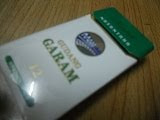Hi to all readers,
Now, I will explain about nuclear safety… how about you? Do you think it is safe to build nuclear power plant in Malaysia? Basically, the three primary objectives of Nuclear Safety Systems as defined by the Nuclear Regulatory Commission are to shut down the reactor, maintain it in a shutdown condition and prevent the release of radioactive material during events and accidents. There are many aspects we should consider. One from them is defense-in-depth approach. To achieve optimum safety, nuclear plants in the western world operate using a 'defense-in-depth' approach, with multiple safety systems supplementing the natural features of the reactor core. Key aspects of the approach are:
- high-quality design & construction,
- equipment which prevents operational disturbances or human failures and errors developing into problems,
- comprehensive monitoring and regular testing to detect equipment or operator failures,
- redundant and diverse systems to control damage to the fuel and preventsignificant radioactive releases,
- provision to confine the effects of severe fuel damage (or any other problem) to the plant itself.
How about nuclear safety when earthquake occur? According to nuclear world website, we find that nuclear power plants are designed with sensors to shut them down automatically in an earthquake, and this is a vital consideration in many parts of the world. Below is the example other country take when earthquake occur:-
- Japanese, and most other, nuclear plants are designed to withstand earthquakes, and in the event of major earth movement, to shut down safely.
- In 1995, the closest nuclear power plants, some 110 km north of Kobe, were unaffected by the severe Kobe-Osaka earthquake, but in 2004, 2005, 2007 and 2009 Japanese reactors shut down automatically due to ground acceleration exceeding their trip settings.
- In 1999, three nuclear reactors shut down automatically devastating Taiwan earthquake, and were restarted two days later.
Nuclear facilities are designed so that earthquakes and other external events will not jeopardize the safety of the plant. Below are the safeties that other countries take into considerations:-
- In France for instance, nuclear plants are designed to withstand an earthquake twice as strong as the 1000-year event calculated for each site.
- Because of the frequency and magnitude of earthquakes in Japan, particular attention is paid to seismic issues in the siting, design and construction of nuclear power plants. The seismic design of such plants is based on criteria far more stringent than those applying to non-nuclear facilities. Power reactors are also built on hard rock foundations (not sediments) to minimize seismic shaking.
- Japanese nuclear power plants are designed to withstand specified earthquake intensities evident in ground motion. These used to be specified as S1 and S2, but now simply Ss, in Gal units. The plants are fitted with seismic detectors. If these register ground during the motions of a set level (formerly 90% of S1), systems will be activated to automatically bring the plant to an immediate safe shutdown.
- The December 2004 tsunamis following a magnitude 9 earthquake in Indonesia reached the west coast of India and affected the Kalpakkam nuclear power plant near Madras/Chennai. When very abnormal water levels were detected in the cooling water intake, the plant shut down automatically. It was restarted six days later.
One more thing we must take into considerations about nuclear safety is passive safety system. One major feature Japan has in common (beyond safety engineering already standard in Western reactors) is passive safety systems, requiring no operator intervention in the event of a major malfunction. The main metric used to assess reactor safety is the likelihood of the core melting due to loss of coolant. These new designs are one or two orders of magnitude less likely than older ones to suffer a core melt accident, but the significance of that is more for the owner and operator than the neighbours, who - as Three Mile Island showed - are entirely safe also with older types.
Other than that, the Emergency Core Cooling System (ECCS) is one more safety thing to the nuclear. Emergency Core Cooling System (ECCS) comprises a series of systems which are designed to safely shut down a nuclear reactor during accident conditions. Under normal conditions heat is removed from a nuclear reactor by condensing steam after it passes through the turbine. These systems allow the plant to respond to a variety of accident conditions and at the same time create redundancy so that the plant can still be shut down even if one or more of the systems fails to function. In most plants ECCS is composed of the following systems; High Pressure Coolant Injection System (HPCI), Depressurization System (ADS), Low Pressure Coolant Injection System (LPCI), Isolation Cooling System and other else.





















